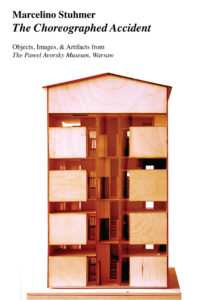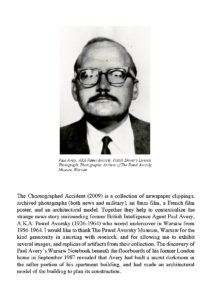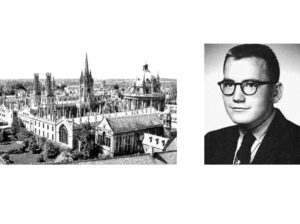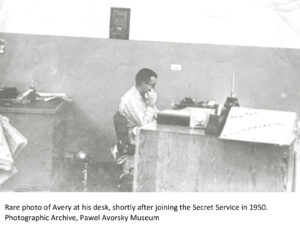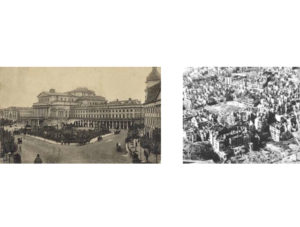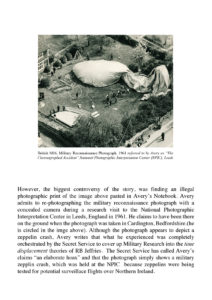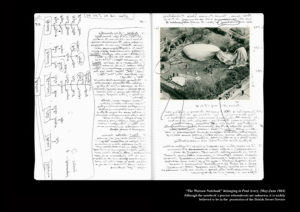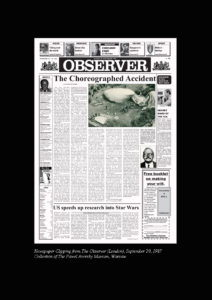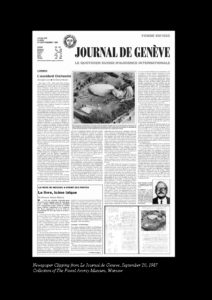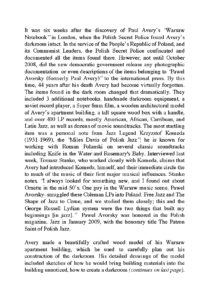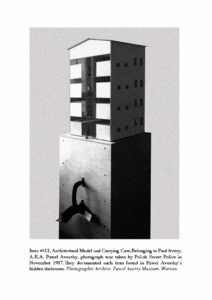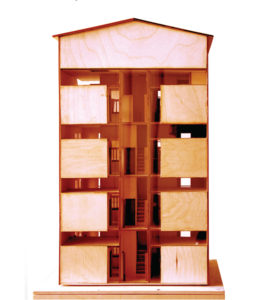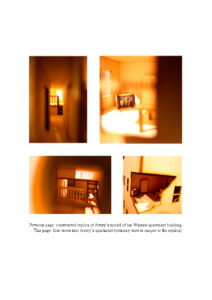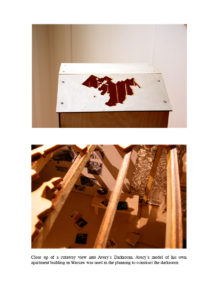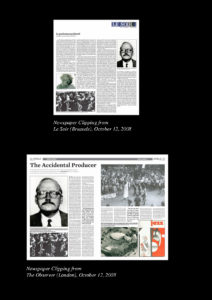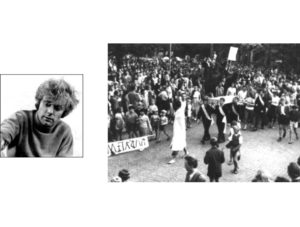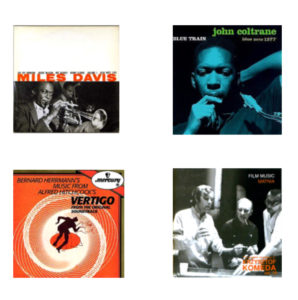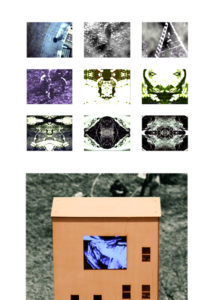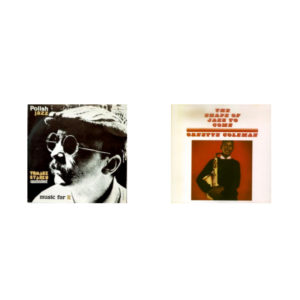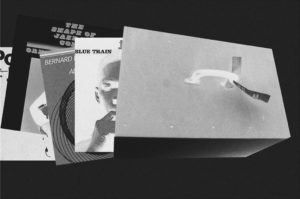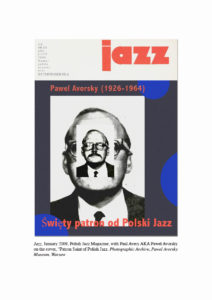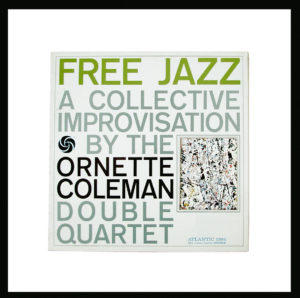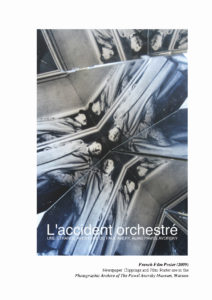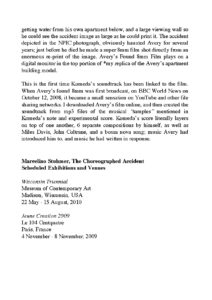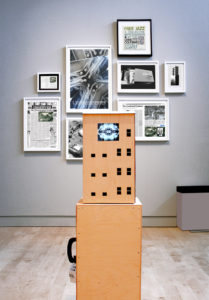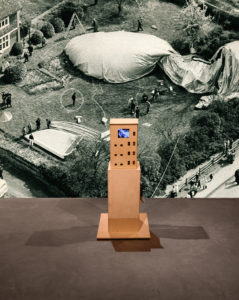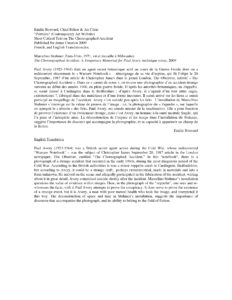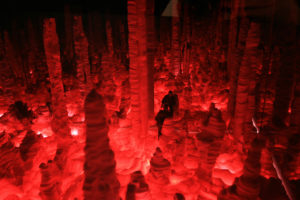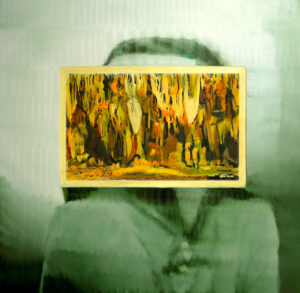The Choreographed Accident: Objects, Images, and Artifacts from the The Pawel Avorsky Museum, Warsaw, 2009-14 is a narrative project. Former British Intelligence Agent Paul Avery (1926-1964), alias Pawel Avorsky, worked undercover in Communist Warsaw from 1951-1964. Avery received a remarkable posthumous notoriety when in October 1987, Elizabeth Cummings, the resident at 84 Walton Street in London discovered Avery’s “Warsaw Notebook” under the floorboards of her home. This had been Avery’s parents house where the family had resided from 1932-1974, She found a top-secret military photograph inside the notebook, and called Scotland Yard. Christopher Avery of the London Observer wrote the first article focusing on the photograph that appeared to depict what Avery described in his notebook as a choreographed accident, completely staged by British Secret Service.
The Choreographed Accident: Objects, Images, and Artifacts from the Pawel Avorsky Museum, Warsaw is a work of fiction, but whenever it is shown, viewers are left to experience the narrative project to decide for themselves if the work is true or not. There is no evidence on view that the work is not true. For the project I created a fictional character, Paul Avery (alias Pawel Avorsky as well as a fictional curator, Elena Gierczek from a fictional museum dedicated to Pavel Avorsky. The work questions the way narratives get told through a barrage of odd contradictory sources, and exercise and undermine the notion that the more detail we’re gives creates a false sense of realism. Ironically, the more I researched the material to write the fictional stories, I found out that my initial suspicions about the “smuggled” origins of Polish Jazz were true. The forged newspaper clippings, the fabricated and found images, and the “found” super 8mm film I created are impossible to experience all at once. The centerpiece of the exhibition is an architectural model of Paul Avery’s Apartment building in Warsaw, which “performs” as a replica of one that Avery built. It also performs as a “cinema house” as Avery’s Found Film is shown on a digital frame inside the model, and is the literal location of the story. The model deconstructs the one-size-fits-all design of contemporary cinema, to create a narrative-specific space where the film screen, and narrative dictate the design, and scale of the architectural form. Inspired by the spectacle/spectator relationship in Dan Graham’s Cinema, the conceptual structure of Avery’s cinema is too small to enter, instead a complete sense of the narrative as a film can only play within the imagination of the viewer. This requires going back and forth between the objects, the film, the images, and the newspaper clippings. The piece was on view at the Museum of Contemporary Art in Madison, for the Wisconsin Triennial 2010, where the model was shown with seven framed prints and one framed artifact, Avery’s own used copy of the LP Free Jazz, by Ornette Coleman. I particularly enjoy the die-cut frame on the album cover, revealing the Jackson Pollack painting beneath. Painting today is a concept, an idea, and the suspension of disbelief that was at the heart of painting for centuries is alive and well, in sculpture, film, installation, and architecture. The choreographed accident of painting no longer needs to be expressed solely through the material of paint to express within an expanded field of discourse. The exhibition premiered at Jeune Creation 2009, Le 104 Center of Contemporary Art, Paris, France. It was then shown at the Museum of Contemporary Art, Madison, WI, for the Wisconsin Triennial, Curated by Jane Simon, 2010
Read the fabricated news articles created for the project:
The Choreographed Accident: British Newspaper: The Observer, September 20, 1987
The Choreographed Accident: French Newspaper: Le Journal de Geneve, September 20, 1987
The Choreographed Accident: French Newspaper: Le Soir, October 12, 2008
The Choreographed Accident: British Newspaper: The Observer, October 12, 2008
